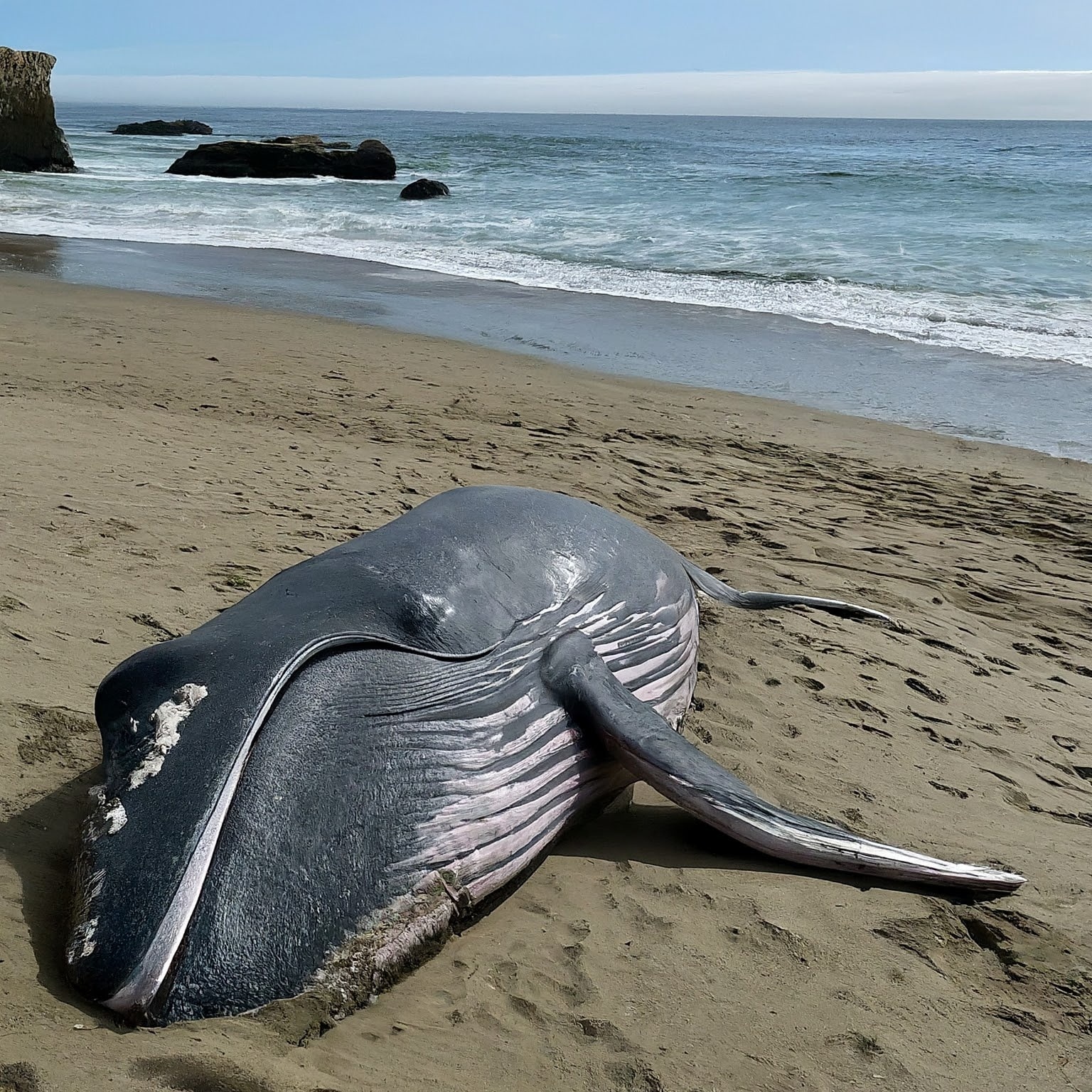A 50-foot gray whale was found dead on Huntington Beach in Southern California, adding to a growing concern about the increasing number of gray whale strandings along the Pacific Coast.
The young adult female, discovered by local authorities, showed no visible signs of physical injury, leaving experts puzzled about the cause of death.
This incident marks another chapter in what scientists are calling a troubling trend for the gray whale population, which has seen significant mortality events in recent years.
According to the Los Angeles Times, employees from the Pacific Marine Mammal Center in Laguna Beach conducted a necropsy on the whale Saturday morning.
Glenn Gray, the center’s chief executive, noted that the absence of marks typically associated with boat strikes, shark bites, or fishing gear entanglement ruled out common causes of death.
Tissue samples have been sent to a laboratory for further analysis, with results expected to take weeks. The lack of immediate answers has deepened the mystery surrounding this whale’s demise.
This stranding comes amid reports of a broader crisis affecting gray whales.
The Los Angeles Times reported that at least 70 gray whales have died this year in the lagoons of Baja California, Mexico, where the species migrates to breed and nurse their calves during winter.
Steven Swartz, a marine scientist who has studied gray whales since 1977, described the situation as alarming, noting that only five mother-calf pairs were observed in Laguna San Ignacio this season—the lowest number ever recorded.
Additionally, three gray whales have died in San Francisco Bay in recent weeks, one of which showed signs of malnourishment, according to the Marine Mammal Center in Sausalito.
The National Oceanic and Atmospheric Administration (NOAA) has been monitoring gray whale deaths closely since declaring an “unusual mortality event” (UME) in 2019, following a spike in strandings along the Pacific Coast.
NOAA’s data indicates that between 2018 and 2023, approximately 690 gray whales were found dead from Mexico to Alaska, though researchers estimate the actual number could be much higher, as many whales die at sea and sink unnoticed.
A 2024 study published in PLOS One, cited by the Los Angeles Times, pointed to a critical drop in food availability in the whales’ Arctic and sub-Arctic feeding grounds as a primary driver of the die-off, with malnutrition being a leading cause of death.
Other news sources have echoed these concerns. An April 2, 2025, article from SFGate reported “near-record” sightings of gray whales in San Francisco Bay, alongside the region’s first stranding of the year near Alcatraz.
The whale, an adult male, appeared emaciated, and a necropsy was conducted to investigate further. Experts suggested that malnutrition, rather than ship strikes or predation, was likely to blame.
Similarly, a February 5, 2025, Los Angeles Times report detailed a 38-foot gray whale that washed ashore at Dockweiler Beach in Los Angeles, also showing signs of being underweight, though bite marks suggested possible orca predation.
The gray whale population, estimated at 14,526 in 2023—a roughly 30% decline from 20,500 in 2019—faces multiple threats. Scientists point to environmental changes, including reduced sea ice and shifts in prey availability due to climate change, as significant stressors.
Joshua Stewart, a quantitative ecologist at Oregon State University’s Marine Mammal Institute, told the Los Angeles Times that while the species is not at immediate risk of extinction, a less productive Arctic habitat could mean fewer whales in the future.
Human-related impacts, such as ship strikes and fishing gear entanglements, also contribute, though they are less significant than malnutrition in recent years, according to NOAA.
Alisa Schulman-Janiger, who leads the Los Angeles chapter of the American Cetacean Society’s gray whale census at Rancho Palos Verdes, described this year’s migration as the sparsest on record.
She told the Los Angeles Times that the whales’ poor body condition, with visible “necks” and protruding shoulder blades, indicates severe food scarcity.
“It’s a very weird year for gray whales, and a concerning year given their body condition, the strandings, and the very low calf estimates,” she said.










